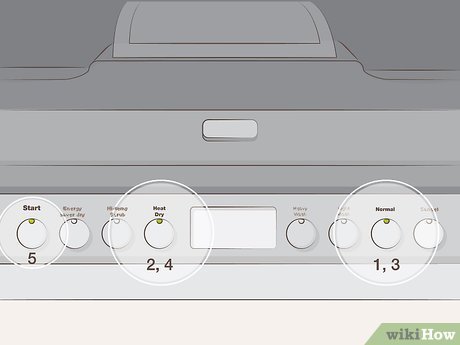
You might be wondering what exactly this error code means. The “OE” code on a Kitchenaid dishwasher typically indicates a problem with the drainage system. It’s sort of like your kitchen sink getting clogged; the dishwasher can’t get rid of the water after a cycle, so it throws up this error to get your attention. Now, before you start panicking or assume the worst, let’s take a closer look at whether hitting that reset button really helps.
Understanding the OE Error Code
Let’s dig into what’s really going on when you see the OE error code. Imagine your dishwasher as a miniature version of your kitchen plumbing system. It’s designed to bring in water, clean your dishes, and then drain out the dirty water. If any part of this process gets disrupted – like if the drain hose gets clogged or the pump isn’t working correctly – you’re likely to see the OE error.
In many cases, this error doesn’t mean your dishwasher is broken; it’s simply having trouble completing its cycle. The most common culprit is a blocked drain hose. Bits of food, grease, or even foreign objects can lodge themselves in there, much like how hair might clog your bathroom sink. Other times, the drain pump might be malfunctioning, or the filters might be blocked. Understanding this is key because knowing the cause can help you decide on the right solution.
The good news is that this isn’t usually as dire as it seems. While it may be tempting to call in professionals immediately, there are some things you can do by yourself – especially if you’re up for a little DIY troubleshooting. Plus, trying a few simple resets and checks can often solve the problem without spending a dime.
Does Resetting Really Resolve the Issue?
Here’s the deal: resetting your Kitchenaid dishwasher is like giving it a fresh start. It’s a bit like rebooting your computer when it starts acting up. The dishwasher’s electronic control board sometimes encounters glitches, and a reset can help clear these temporary issues. It won’t fix physical problems like a blocked hose, but it can certainly help when the error is due to a minor communication error within the system.
To reset your dishwasher, you’ll usually need to press a combination of buttons or turn off the power for a few minutes. This varies by model, so it’s best to check your user manual for the specific steps. However, as a rule of thumb, switching the dishwasher off at the circuit breaker for a few minutes often does the trick. This effectively ‘reboots’ the system and can clear the error code.
If your reset attempt doesn’t work and the error reappears, don’t worry. Remember, resetting is just one part of troubleshooting. If the problem is more severe, like a damaged pump or a severely blocked hose, further investigation or a professional’s help might be necessary.
Additional Troubleshooting Tips
Resetting can be a quick fix, but what if the error persists? It’s time to roll up your sleeves and check a few potential trouble spots. First, examine the drain hose. Disconnect the power and water supply, and then detach the hose to check for any blockages. If you find any clogs, clear them out and reattach everything before testing the dishwasher again.
Next, look at the dishwasher’s filters at the bottom of the machine. If they’re clogged with debris, they can prevent water from draining properly. Cleaning these filters regularly is like giving your dishwasher a tune-up, ensuring it runs smoothly.
Another potential area is the drain pump. This component can sometimes get jammed with debris. If you’re comfortable doing so, gently check and clean the pump impeller to ensure there’s nothing obstructing its movement. However, if you’re not entirely sure, it’s always okay to seek professional advice.
Preventative Maintenance and Final Thoughts
To avoid seeing the OE error in the future, there are a few preventative steps you can take. Regularly cleaning the filters and keeping the drain hose clear of obstructions can go a long way. It’s like maintaining a car – a little regular maintenance can prevent bigger issues down the road.
For a dishwasher, using high-quality detergent and ensuring you scrape off large food particles before loading your dishes can also minimize problems. Think of it as treating your dishwasher with the respect it deserves, keeping it running effectively for years to come.
If you’ve tried resetting and the basic troubleshooting without success, it might be time to call a professional technician. They’ll have the tools and expertise needed to get to the bottom of more complex issues. But before you do, give these simple steps a try – you might just find that the solution is easier than you thought.